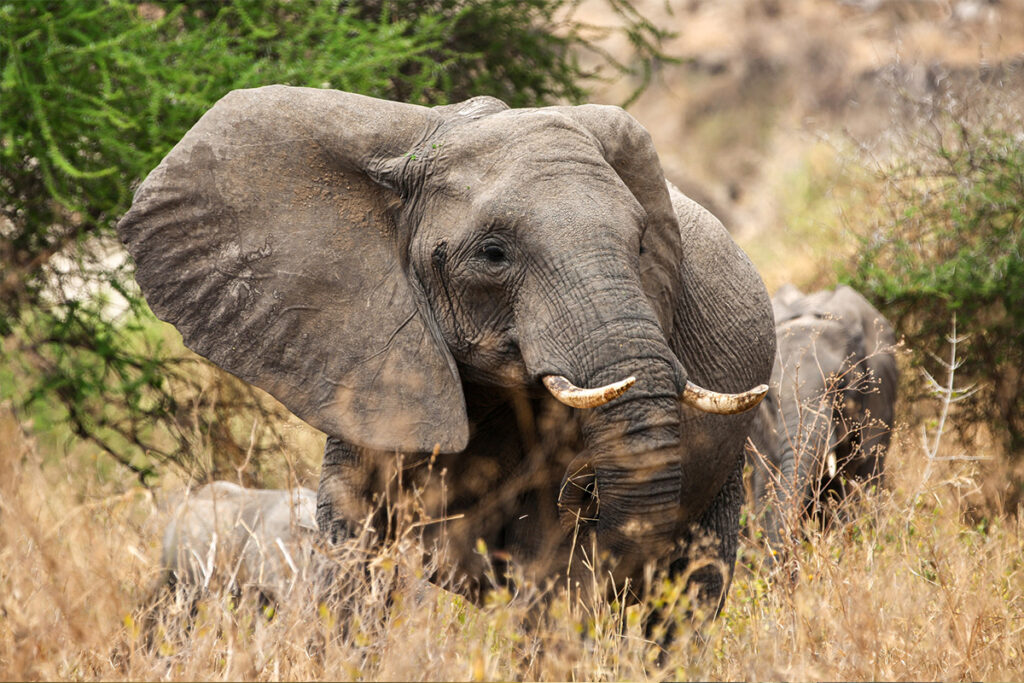The Maasai people, known for their vibrant, multicolored shukas, have adapted their community-focused lifestyle in the rapidly evolving landscape of modern Tanzania. Despite the allure of urbanization, they largely continue to live a semi-nomadic lifestyle, centered around cattle herding, which remains a significant aspect of their cultural and economic existence. This delicate balance between tradition and modernity raises intriguing questions about how communities preserve their identity amid global change.
Historically, the Maasai have been pastoralists, and their resilience has allowed them to maintain their cultural practices even as Tanzania’s development progresses. Over 1.5 million Maasai live across Kenya and Tanzania, a testament to their enduring legacy in a rapidly changing world. As the country progresses, educational and health initiatives have begun to reach these communities, enabling them to bridge ancient traditions with the demands of contemporary society.

How do the Maasai people live in modern Tanzania?
The Maasai people are iconic for their red robes and tall, slender physiques. Living across the vast plains of Tanzania, they hold to age-old traditions. Cattle play a significant role, serving as currency and reflecting wealth. Despite modernization, cattle herding remains central to their way of life. This practice supports their nomadic lifestyle, letting them travel in search of grazing lands.
With changing times, the Maasai face new challenges. Access to education in their communities is improving, yet it’s often limited. Many Maasai youths now attend school and seek opportunities beyond herding. However, urbanization pressures their pastoral lands, threatening their traditional lifestyle. Efforts are ongoing to balance development and cultural preservation.
Maasai villages, known as bomas, showcase their communal living. Houses are circular and made from mud, sticks, and cow dung. Built close together, these homes underline their strong sense of community. They gather for ceremonies, which are rich in music, dance, and storytelling. These events strengthen bonds and pass down cultural values.
Despite the changes, the Maasai adapt while holding onto their identity. Many embrace aspects of modern life, like mobile phones, assisting in cattle trade. Sustainable tourism also offers new income streams, allowing them to share their culture. Preserving heritage remains important, ensuring they thrive without losing their roots. This resilience defines their journey in today’s Tanzania.
Preservation of Traditional Maasai Lifestyle
The Maasai have managed to keep their traditional lifestyle intact despite many changes around them. Cattle herding, which they regard as both art and necessity, remains a cornerstone. This practice supports their needs, providing milk, meat, and materials. Through generations, knowledge of cattle care and migration patterns has been passed down. It’s a testament to their resourcefulness amidst evolving times.
Clothing and adornments reflect their rich heritage, vibrant and full of symbolism. Maasai wear shukas, the bright red and blue wraps. Beaded jewelry, crafted by hand, tells stories of social status and accomplishments. Young girls learn the craft early, continuing this age-old tradition. These visuals connect Maasai individuals, fostering a shared identity.
Ceremonies mark important life stages, reinforcing cultural roots. Events like the Eunoto ceremony celebrate warriors becoming elders. These gatherings involve singing, dancing, and storytelling. They provide a sense of unity and purpose, strengthening community bonds. Such events promote continuity between elders and younger generations.
Environmental stewardship links closely to their way of life. The Maasai follow sustainable land-use practices, ensuring resources for generations. Living harmoniously with nature, they respect the delicate balance between people and land. Efforts to protect their environment are crucial, advocating for sustainable practices elsewhere. This relationship with nature is central to their enduring existence.
Interaction between Maasai People and Modern Tanzanian Society
The Maasai and modern Tanzanian society experience both harmony and tension. On one hand, cultural exchanges lead to better understanding and mutual respect. Education initiatives allow many young Maasai to attend schools. Here, they gain knowledge and skills necessary for today’s world. Yet, schooling sometimes challenges traditional wisdom passed through generations.
Economic opportunities are diverse, with some Maasai venturing into cities for jobs. Tourism offers unique chances for Maasai to share their culture, attracting visitors eager to learn. This interaction boosts the economy, benefiting both Maasai communities and urban areas. However, managing these interactions carefully is crucial to avoid cultural dilution. Many strive to find a balance between these paths.
Land use conflicts remain an ongoing challenge. The expansion of urban areas sometimes encroaches on Maasai grazing lands. Efforts to resolve these disputes involve discussions and negotiations between government, Maasai leaders, and other stakeholders. Finding solutions benefits all, allowing peaceful coexistence while respecting Maasai livelihoods. These conversations continue as both sides seek compromise.
Overall, interactions shape the evolution of Maasai and modern Tanzanian relationships. Embracing development while preserving tradition is key. Respect and understanding are essential as both groups move forward together. These evolving dynamics highlight the resilience and adaptability of the Maasai. Such a challenging journey strengthens the bonds between cultures.
The Future of Maasai People in Evolving Tanzania
Predicting the future for the Maasai involves understanding the delicate balance between tradition and modern pressures. The Maasai face both opportunities and threats as Tanzania develops rapidly. Modern education presents avenues for young Maasai to acquire new skills, aiding in job opportunities beyond their communities. Yet, this also challenges them to maintain their cultural identity. While learning tech skills, they still value their rich heritage.
Lands essential for traditional Maasai herding face risks from industrial growth and urban encroachments. Preserving these areas is vital for their survival. Sustainable land-use policies can protect grazing areas while supporting national progress. Collaborative efforts between government, Maasai leaders, and conservation groups are necessary. They aim to secure both ecological balance and Maasai prosperity.
Healthcare access poses another concern, as many Maasai live in remote areas. Improvements in healthcare infrastructure are crucial. Mobile clinics and partnerships with healthcare providers can make services accessible. Such efforts improve overall health and quality of life. Consequently, healthy communities thrive and better engage in societal development.
Cultural preservation in a globalized world remains a priority for the Maasai. Participation in international forums allows them to share their perspectives on issues affecting their future. Global awareness can bring support for initiatives that protect Maasai culture. Their vibrant traditions, from song and dance to storytelling, are celebrated and appreciated. Ultimately, international collaboration aids in preserving the Maasai way of life.
As they journey into the future, Maasai strive for a harmonious existence within Tanzania’s modernization. They aim to merge the ancient with the new in innovative ways. Support from various sectors enhances this transition. Resilience and adaptability ensure the Maasai culture remains vibrant. Their enduring spirit is a testament to their continued relevance in evolving times.
Key Takeaways
- The Maasai balance tradition and change in modern Tanzania.
- Cattle herding remains central to their cultural identity.
- Education helps Maasai youths embrace new skills and opportunities.
- Sustainable land use policies protect Maasai grazing areas.
- Global awareness supports preservation of their vibrant culture.
Conclusion
The Maasai people of Tanzania showcase a unique ability to harmonize their traditional lifestyle with the demands of modern society. Despite the challenges posed by urbanization and industrial growth, they continue to uphold their rich cultural heritage. This balance not only preserves their identity but also offers valuable lessons in resilience and adaptability. The Maasai serve as a testament to maintaining cultural significance amidst global changes.
As Tanzania continues to evolve, the Maasai’s journey offers insightful perspectives on sustainable development and cultural preservation. By embracing education and engaging in meaningful dialogue, they navigate a path that respects both tradition and progress. These efforts exemplify the value of preserving cultural uniqueness while contributing to a nation’s overall development. Their future reflects both the strength of time-honored practices and the promise of new opportunities.



